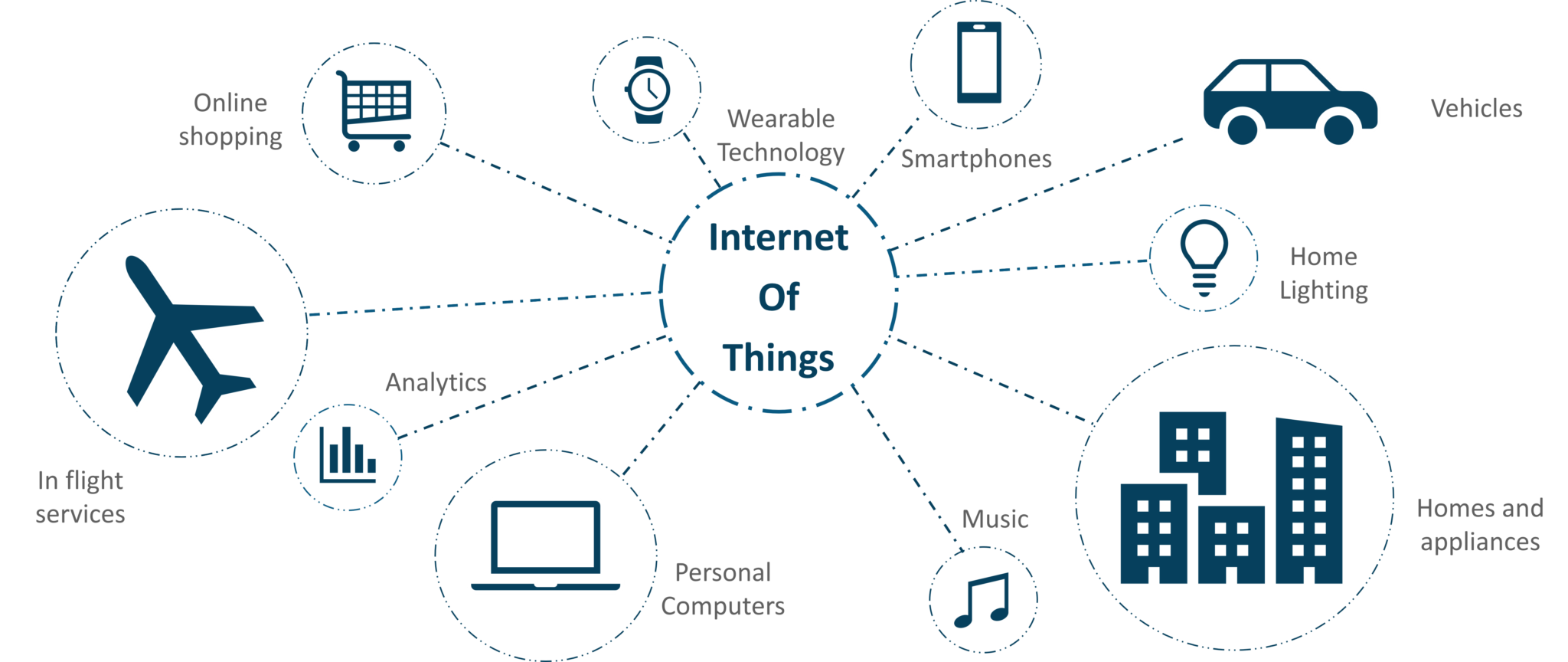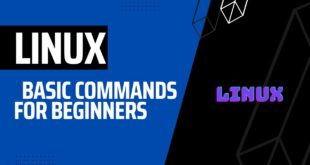IoT for developers
Internet of Things is definitely enjoying the spotlight for the remarkable integrated computing system control it provides, making IoT for developers an inevitable science to learn. In a previous article, you have learned about Blockchain for developers
In this article, you will learn the benefits of learning IoT, the use cases of the system, and how to become an IoT developer. However, first of all, let’s get to know what is IoT in simple words.

What Is IoT And How It Works?
The Internet of Things (IoT) refers to millions and billions of devices connected to the internet around the world for sharing data. Due to cheap computer chips and the availability of the internet everywhere, it makes it possible to turn everything from a needle to a big city into an IoT.
When an object is connected to the internet, it can either send or receive information or works in both ways. This ability makes them smart, and that is why IoT matters. IoT provides people and businesses a better control and insight over objects as well as the environment.
With the arrival of IoT, the world around us will be smarter and responsive than before, merging the physical and digital universe. There are four main components in an IoT system. These include devices/sensors, connectivity, stream processing, and user interface.
- First, a device or sensor will collect data from the environment like any temperature sensor or GPS.
- In the second step, the sensors will send data to the cloud. Sensors and clouds will be connected through Bluetooth, Wi-Fi, satellite, cellular, Ethernet, or LPWAN (low-power wide-area-networks).
- The connectivity selection depends on range, bandwidth, and power consumption requirements. When a cloud receives data, it will process it. For instance, the temperature sensor will check whether the reading is in an acceptable range or complex.
- The end-user gets that information via email, text, or any other alert. For example, when the temperature in cold storage cross maximum range, the alarm will buzz to notify the user. The user will be able to check the system proactively on an interface.
These are basic elements of IoT. Depending upon the application, the user can adjust the system remotely via a phone app, or they automatically adjust through the predefined rules.

History of IoT
In 1832, the concept of connected devices emerged with the invention of the first electromagnetic telegraph. The two machines could communicate directly with the help of the telegraph by transferring electrical signals.
However, it actually begins with the arrival of the internet, an essential component of IoT. In the 1980s, the Coca-Cola vending machine was the first connected device at Carnegie Melon University. It was operated by the local programmers.
Micro-switches were integrated into the vending machine and used the internet to check if the cooling device is keeping the drinks cold as well as the availability of the Coke cans. After this invention, the studies on the development of internet-connected machines fostered rapidly.
For the very first time, John Romkey, in 1990, connected to the internet with TCP/IP protocol. After a year, the University of Cambridge researchers brought forward the idea of a coffee monitor web camera. It was aimed to monitor the amount of coffee in the coffee pot of local computer lab.
Who Invented The Term IoT?
In 1999, Kevin Ashton, a visionary technologist, coined it as ‘the internet of things.’ He was giving a presentation to Procter and Gamble, where he defined IoT as a technology for connecting devices using RFID tags for their supply chain management.
The term ‘internet of things’ widespread use at the beginning of the 21st century by media like Forbes, The Guardian, and Boston Globe. The interest in IoT increased steadily, and in 2008, the first international conference on IoT held in Switzerland.
During this period, an internet-connected LG Electronics refrigerator in 2000 and a robot named Nabaztag in 2005 who was able to share the latest news were notable developments.
In 2011, the Gartner hype Cycle supported the IoT boom for emerging technologies. IoT central, a network layer protocol IPv6 was launched in the same year. Since then, Global tech tycoons like Google, Apple, Cisco, and Samsung are putting their efforts on the production of IoT devices and sensors.
All this is enough to tell how important IoT is for developers.
IoT Use Cases: What Are The Advantages Of IoT?
Now, smart sensors are integrated into billions of devices across the globe and generate massive data. It covers almost all areas, including military, smart building, retail, manufacturing, agriculture, energy, healthcare, logistics, smart vehicles, and transportation.
Here are some major use cases of the internet of things.
Connected Autonomous Vehicles: In the future, vehicles will have level 5 autonomy means fully autonomous without any human intervention. Cars will even communicate with each other, road infrastructure, and perhaps with a pedestrian by using V2X (vehicle-to-everything) technology.
Today, car manufacturers are working on self-driving technology levels 2, 3, and 4. Radar cameras, LIDAR, and other onboard sensors will collect information about traffic conditions, road conditions, and will inform inappropriate driving conditions.
Smart Security for Homes and Businesses: The smart security systems can collect, store, and perform analysis on video streams. With high-resolution 4K video cameras and machine learning, the system will carry out motion detection and pattern recognition.
Smart Wearables: The wearable market is flourishing with the influx of personal devices such as fitness trackers and smartwatches. Consumers want a seamless connection between their smartwatches and smartphones to monitor, manage, and secure data.
This especially includes health data. A recent report predicts that by the year 2022, the wearable industry will sell 233 million units annually.
Connecting Homes to IoT: With smart speakers, anyone can command household electronics to do a variety of functions. For example, to instruct dimming the room lights, setting thermostat temperature, etc.
Future Supply Chains: IoT supply chain use case is increasingly complex and global. Low-power IoT sensors can track assets and monitor the quality of the product, such as temperature, expiry, vibrations, etc. throughout the supply chain.
Smart Cities: Creating smarter and more efficient cities is another most promising IoT application. It includes optimization of energy grids, transportation, and parking systems.
So these incredible applications of IoT are enough to picture the world of tomorrow, making IoT for developers inevitable.

Benefits of Learning IoT for Developers
Many industries are taking advantage of IoT technology for daily work to make profitable business decisions and reduce loss. There are various opportunities in the field of IoT in terms of jobs and will increase more in the future.
Here are some major benefits to learning IoT.
Excellent Scope: IoT is going to provide IT professionals, technical and solution architects a whole digital experience. In the IoT domain, UI/UX design, information security, mobile development, etc. will have more demand.
Best Domain for Career-Oriented Creators: For creative people, IoT is the best platform to build their careers. It is easy to explore new applications and technology.
They will more confidently represent themselves with better IoT decision making and communication solutions. It is the best opportunity for them to learn, understand, and build systems on their own.
Affordable to Learn: Beginners might be stuck while deciding whether IoT is the right field for them or not. IoT provides an easy understanding of using tools, platforms, devices, software. And that is why students these days usually opt for an IoT career.
Opportunity for Developers: IoT for developers is a helpful platform with good programming knowledge and skills. They need to have a good understanding of the required programming language and development tools for IoT.
Better Understanding of Business Strategies: With e-commerce platforms, people can do their business in PCs and smartphones. Staying ahead of the competition requires thinking from a user’s perspective.
It provides a better understanding of business tactics as well as speeds up knowledge. Those who are going for a business startup with new techniques should learn this course.
Practically implementing Core Technologies: With basic knowledge of communication channels, sensors, actuators, connectivity, and Messaging protocol, etc. and then with IoT training, you can build an IoT training kit on your own. A better understanding of IoT will help you emerge in the near future.
Now, let’s get to know what skills are needed for IoT?

How Can You Become An IoT Developer?
Those who want to pursue a career in IoT development need to have some interpersonal and practical skills. Here is what you need to become an IoT developer, along with the skills required for IoT developers.
Get a Degree: Usually, companies hire IoT developers for the entry-level position who have at least an undergraduate degree. People with engineering, computer science, or software development can effectively utilize their degree in the IoT field.
Mostly, electrical engineering or computer science students come to the IoT field. Still, those who have different backgrounds can get training from IoT learning diploma courses to become an IoT developer.
In-depth Understanding of Sensors: Developers working in the field of IoT need to have a deep understanding of wireless communication and sensors. There are many online courses on sensors and development available to enhance the skills.
Learn Programming: Learn Python or JavaScript before starting your career as an IoT developer. Many IoT developers nowadays use these common languages with compatible window IoT languages such as C# or .Net.
Programming the devices need programming skills to comprehend the data coming from the sensors linked to the IoT device, and then deliver these to the server.
Understand Raspberry Pi: The best example of a tiny computer is Raspberry Pi, and this component is not very expensive. You will learn to solder simple circuits together and can link the circuits with software.
Focus On User Interface: It is essential for developers to hold high-quality standards for the best user experience when developing an IoT product commercially.
Join Online Community or Group: Becoming an IoT developer also requires exploring, developing, and refining thought practically by looking into the surrounding community of innovators and producers.
Being an IoT developer means being a tech enthusiast. So, get to know about the latest tech news and what is going ahead and what’s hot in the IoT business.
Learning Resources

Final Thoughts
Now, you not only know how IoT works but how important this technology is for the future. Seeing its popularity, we can only conclude that its demand will rise in the near future as from commercial sectors to domestic users, people want ease, and IoT provides hat ease and comfort with the integrated system of computing devices, mechanical and digital machines, and objects.
That is why IoT for developers is a must in the future if they wish to benefits from the upcoming surge of new job openings.
Relative Articles:
- How to become a Good Developer in 2020?
- Cybersecurity for Developers – How to learn cybersecurity
- Data Science for Developers, How to become a data analyst?
- Artificial intelligence for developers and how to learn artificial intelligence
 Best Tech Blog For Programming Articles And Video Tutorials Code Is Easy
Best Tech Blog For Programming Articles And Video Tutorials Code Is Easy




